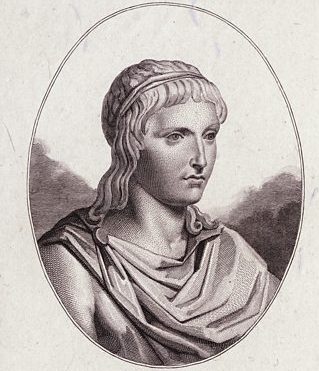
Suetonius (c. 69–122 AD) was a Roman writer and official best known for The Lives of the Caesars, a series of imperial biographies. His work is not “history” in the modern sense. Instead of a strict chronological account, Suetonius arranged material thematically, collecting anecdotes, gossip, and moral judgments to illustrate the character of each emperor. He often drew on popular rumors and sensational stories, yet he also had access to official records in his role as imperial secretary. The result is a vivid but not impartial portrait of Roman rulers — more biographical and moralistic than the sober analysis of historians like Tacitus.
In the midst of these biographies, Suetonius makes two brief but important references to early Christianity. In one passage, he mentions disturbances in Rome during the reign of Claudius (41–54 AD) “at the instigation of Chrestus.” In another, he describes punishments inflicted on Christians under Nero (54–68 AD). Though short, these notices matter because they come from a non-Christian source, written within living memory of the apostolic era. Regardless of one’s belief or interpretation, Suetonius’s passages provide valuable historical insight that corroborates the Gospel record and the rise of early Christianity.
📜 The Claudius Passage (Claudius 25)
“Since the Jews constantly made disturbances at the instigation of Chrestus, he expelled them from Rome.”
This expulsion is historically well-attested and directly aligns with Acts 18:2, where Paul meets Aquila and Priscilla in Corinth because Claudius had ordered Jews to leave Rome.
The Central Debate: Who was “Chrestus”?
Majority View: “Chrestus” as a Misspelling of “Christus”
The majority view holds that Suetonius, a Roman biographer writing decades after the event, either misunderstood a garbled report or simply used a common ancient spelling for “Christus” (Christ). The disturbances were not caused by an individual named Chrestus present in Rome, but rather by internal disputes among Roman Jews “at the instigation of” the message of Christ. This interpretation aligns perfectly with the spread of early Christianity, which often caused tension within Jewish communities (as seen in the book of Acts). The disputes over whether Jesus was the Messiah became so disruptive that they drew the attention of the Roman authorities, prompting the expulsion.
- Strengths:
- Directly connects the Claudius 25 passage to the rise of Christianity.
- Explains why disputes among Jews were serious enough to warrant imperial action.
- Matches Acts 18:2 and the pattern of conflict over Christ seen elsewhere.
- The name “Chrestus” was a known variant or misspelling of “Christus” in the ancient world, which lends significant weight to this argument.
- Weakness:
- Requires assuming Suetonius misheard or misreported the name.
- Relies on interpretation rather than the plain reading.
Minority View: “Chrestus” as a Different Agitator
This view maintains that Suetonius’s passage has no direct connection to Jesus or Christianity, and that “Chrestus” was a different, otherwise unknown Jewish agitator.
- Strengths:
- Suetonius’s text is read literally and avoids assuming a misspelling.
- It highlights the general Roman suspicion of Jewish unrest, which was a recurring theme in the 1st century AD.
- Weaknesses:
- It’s an argument from silence, as no other historical source mentions this agitator, which contrasts with the well-documented rise of early Christianity.
- The theory doesn’t account for the clear historical progression from the expulsion in 49 AD to Suetonius’s later mention of a distinct Christian community under Nero in the 60s AD.
Takeaway: Both interpretations agree on the key fact: Claudius expelled Jews from Rome around 49 AD. This event anchors Acts 18:2 in solid Roman history. Whether “Chrestus” was Christ himself or another figure, Suetonius confirms the broader context of early Christian disputes disrupting Jewish communities in Rome.
📜 The Nero Passage (Nero 16)
“Punishment was inflicted on the Christians, a class of men given to a new and mischievous superstition.”
Key points:
- Clarity: This passage is more straightforward, explicitly mentioning “Christians” (christiani). It confirms that by the 60s AD, Christians were a distinct, known, and disliked group in Rome.
- Alignment: This aligns with the accounts of Tacitus, who wrote that Nero blamed Christians for the Great Fire of Rome in AD 64.
🏛️ Why Suetonius Still Matters
Regardless of which interpretation of “Chrestus” is correct, Suetonius’s testimony remains historically significant.
- Concrete Corroboration: The Claudius expulsion is independently verified by Suetonius and matches Acts 18:2, giving a secular anchor to the biblical narrative.
- Clear Acknowledgment: The Nero passage (Nero 16) is unambiguous: Christians were a recognized, distinct, and disliked group in Rome by the 60s AD.
- Hostile Witness: Suetonius offers testimony with no Christian bias. His dismissive tone (“mischievous superstition”) actually strengthens his value as evidence—he confirms Christianity’s presence while mocking it.
- Cumulative Testimony: Taken together with Tacitus and Josephus, Suetonius provides a hostile yet independent line of evidence. Even short, critical mentions prove Christianity was visible, controversial, and provoking state action in the first century.
In short: Suetonius’s gossipy, sometimes unreliable style doesn’t diminish his value here. If even a hostile Roman biographer casually acknowledges Christian disturbances and persecution, it corroborates the Gospel backdrop and shows that early Christianity was a disruptive and undeniable force in the heart of the Empire.
📚 References & Image Credits
- Suetonius, The Lives of the Caesars (Claudius 25; Nero 16).
- Dunn, James D. G. Christianity in the Making, Vol. 2: Beginning from Jerusalem. Grand Rapids, MI: Wm. B. Eerdmans Publishing Co., 2009. (Majority View Perspective)
- Goodman, Martin. Rome and Jerusalem: The Clash of Ancient Civilizations. New York: Alfred A. Knopf, 2007. (Minority View Perspective)
- Image Credits: Caius Suetonius Tranquillus. Wikimedia Commons. Public Domain. Available here.

Leave a Reply